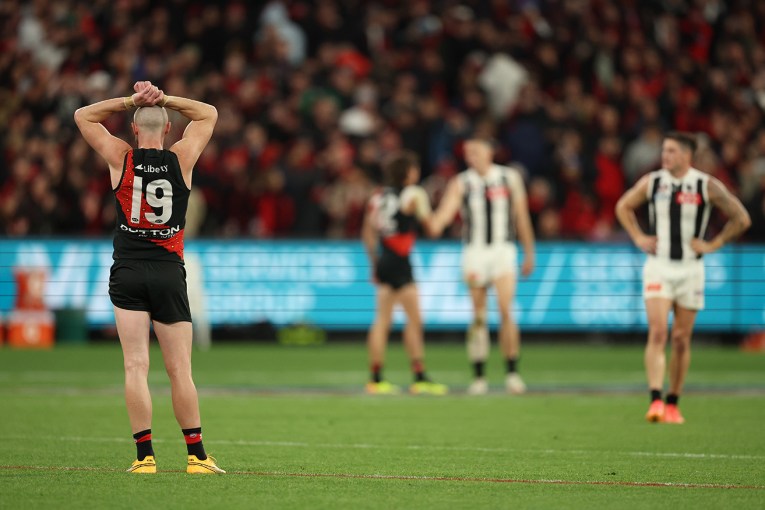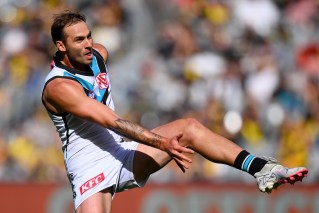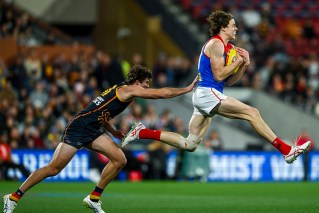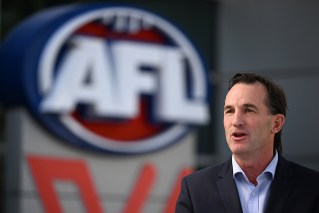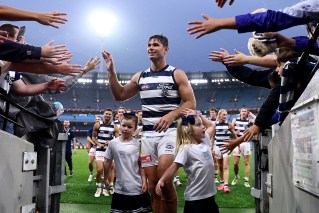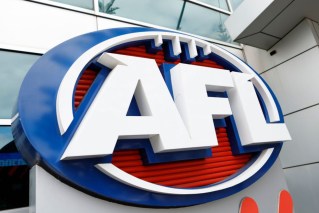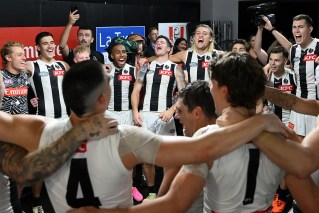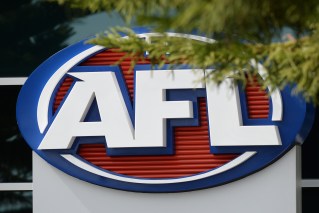AFLW chief Nicole Livingstone embraces change as season three is set to roll

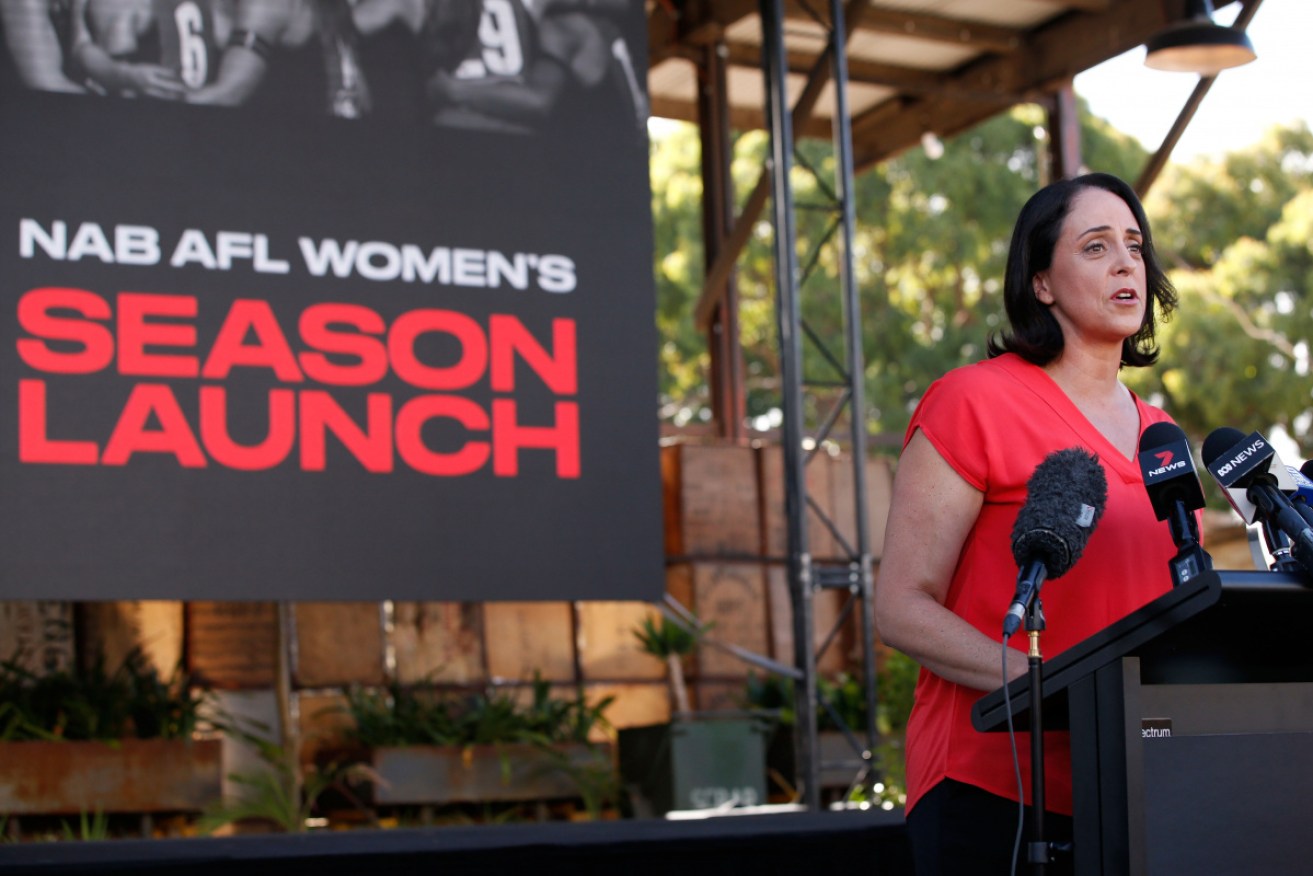
The AFL's head of women's football Nicole Livingstone at the launch of the AFLW season. Photos; Getty
Nicole Livingstone is a bit edgy.
The former backstroke world champion and Olympic medallist has those butterflies in her stomach that used to visit her before a big swim meet.
“Not long to go now,” the head of women’s football at the AFL tells me.
“I feel like when the day count before the Olympics used to be on the wall at the Australian Institute of Sport at Bruce Stadium, and you watch it and suddenly you’re in single figures.”
Livingstone is counting down to the start of the third AFLW season, which begins on Saturday when Geelong make their competition debut when they host Collingwood.
The Cats are one of two new teams entering the AFLW, along with a powerful North Melbourne side, which are expected to have an immediate impact.

Nicole Livingstone and the AFLW captains at the 2019 season launch. Photo: Getty
It’s Livingstone’s job to oversee the expansion and promotion of the women’s game and its major competition. While its rapid expansion has been exhilarating for many, it’s also created a number of major challenges.
Livingstone understands that meeting expectations, as many and varied as they are, is a daunting task.
Her elite sports experience and her roles as a sports administrator (she’s been a board member at ASADA as well as being a current board member of swimming Australia) has her well placed to handle the pressure before the opening bounce of the season cranks up.
“The same notions apply in that the preparation that you put in is the result that you get and we’ve worked our backsides off in the last 12 months,” she said.
The AFLW rode a wave of euphoria in 2017 in a debut season that saw big crowds revelling in the arrival of the women’s professional league.
By the time of its sophomore campaign in 2018, public opinion was less sanguine as lower scoring games and scrappy football became the focus of critics.
When the AFL’s longest-serving coach Michael Malthouse was critical of the women’s game in its current incarnation last year, it sparked a war of words between the coaching legend and one of the game’s stars, Moana Hope.
"I don’t like [women’s football] in its present format where the casualty wards are full of young girls after games, it worries me." Mick Malthouse joins us to clear up his controversial comments about women's AFL. #9Today pic.twitter.com/9I4YgTitx5
— The Today Show (@TheTodayShow) September 27, 2018
Livingstone acknowledges that some men are still struggling with the notion of women playing the same collision sports they enjoy, and the notion that the desire to do so is not a binary gender setting.
“It’s not ignorance, I think it takes some men out of their comfort zone. They’re used to these contact sports being the domain of men. So the discomfort of the idea of a woman being injured is an issue,” she said.
“Whereas the players are telling us – we love the sport that we play and we know this is the potential risk. It doesn’t stop us from playing so don’t view any differently from the men.”
Livingstone concedes the nature of injury for women in the sport does have a unique profile.
“We know from an ACL (anterior cruciate ligament) and a concussion point of view there is still more to do. This year we’ve got isolated vision at every match for medical staff to review an injury immediately (as is the case in the AFL).”
The expansion of the competition to 10 teams did not lead to an expanded AFLW fixture, with a conference system introduced where teams will still play just seven home and away matches.
Some fans were furious at what they saw was an attempt to corral the women’s game into a boutique cul-de-sac ahead of the men’s season.
Livingstone defends the new format.
“We went really hard at explaining the conferences. We think there’s a generation that are used to conferences because of US sport,” she said.
“We’re not going to shy away from being innovative. We have the ability to take this competition to a place that the AFL might like to but the heritage of the game and the fanatic support may have them thinking twice.
“We’re in a period of time where we need sustainable growth and that is also about the length of the season.
“We have to be realistic in terms of our budget. It’s not only the AFLW, we’re investing in talent pathways. We’ve put staff in every state whose sole job it is to look after women’s footy and talent development, which is huge for women’s footy.”
While on the field the AFLW will showcase women’s footballing talent it’s a different story in the coach’s box, where the glass ceiling remains firmly fixed.
All 10 senior coaches are men. Livingstone won’t rule out a quota system for clubs if the situation doesn’t improve.
“I won’t rule it out but it’s a decision for the competition committee, the AFL executive, and the commission, but I think one of the things we hear from our coaches is that they want to get the experience first rather than throwing them in the deep end and potentially failing.
“That would set them back.
“We’ve invested in six female coaches this season who have been learning alongside male coaches, who’ve been engaging in professional development.
“What they need is an opportunity.
“They also need to lose the cloak of invisibility, to be able to improve themselves and to be able to be seen.”
AFLW starts on Saturday, February 2, Geelong v Collingwood, GMHBA Stadium, 6.45pm
